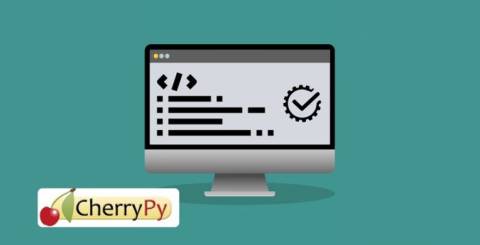Testing CherryPy Applications: Top Strategies and Tools

CherryPy remains a vigorous and lightweight web structure for Python, offering engineers a flexible stage to construct web applications. At its center, CherryPy is intended for simplicity and adaptability, giving a powerful foundation for creating dynamic and versatile web applications.
Even though CherryPy does not have as many features as other web frameworks like Django or Flask, its simplicity and minimalism make it a popular choice for Python web developers who prefer a lighter approach.
You can test applications constructed involving CherryPy in the accompanying ways:
- Unit testing
- Integration testing
- Functional testing
- Performance Testing
- Security Testing
Before we plunge into testing methodologies and tools, we should understand how the Python CherryPy Framework works.
How Does Python CherryPy Framework Work?
Python CherryPy Framework works on a basic guideline for planning URLs to Python objects and strategies. It is capable of handling requests and routing them to the appropriate Python code methods as an HTTP server. This settles on CherryPy as a fantastic decision for creating web applications in a direct and Pythonic way.
HTML Templates in CherryPy
CherryPy itself doesn't deliver HTML templates. Instead, it incorporates flawlessly with different layout motors, like Jinja2 or Mako. This permits engineers to isolate the application logic from the presentation layer, advancing a spotless and viable code structure.
What Defines CherryPy as a Web Framework?
CherryPy is a robust web framework because of the following key components:
HTTP Server: CherryPy incorporates its own HTTP server, permitting engineers to run web applications without the requirement for extra server programming.
Request Dispatcher: The structure proficiently maps HTTP requests to the proper Python techniques, improving the treatment of diverse URLs and boundaries.
Design Framework: CherryPy provides an adaptable configuration framework, empowering designers to redo settings and ways of behaving as per the requirements of their applications.
Plugin System: The extensibility of CherryPy is upgraded through a module framework that permits engineers to consistently add or change highlights.
Testing CherryPy Applications: Need and Significance
Testing is a fundamental part of the product improvement lifecycle, ensuring unwavering quality, implementation and security of use. To ensure a robust and error-free web experience, testing becomes especially important for CherryPy applications. We should dig into the top techniques and devices that engage in the testing of CherryPy applications.
Top Techniques for Testing CherryPy Applications
Unit Testing
Objective: Test individual parts and work in detachment to guarantee they proceed true to form.
Tool: Python implicit ‘unit test’ module or outsider libraries like ‘protest’.
Unit testing structures the foundation of the testing pyramid. A product testing procedure includes testing individual parts or units of a product application to guarantee that their capability is true to form. Depending on the programming language used, a unit is the smallest testable component of the software. It typically consists of a single function, method, or class.
The essential objective of unit testing is to check that every unit of the product plays out its expected undertaking accurately and to distinguish any possible issues, bugs, or deformities.
Integration Testing
Objective: Confirm the collaboration between various parts and the general usefulness of the CherryPy application.
Tool: ‘WebTest’ or other testing structures that permit testing HTTP solicitations and reactions.
With regards to web applications, it is crucial to check assuming various modules or parts are working amicably. To do as such, you want to compose tests that look at such mixes. Methods that interact with other methods, APIs, services, helpers, UI components, databases, network systems, or middleware are all examples of joint integrations that come into focus.
Integration tests make use of the same libraries and tools as unit testing. They are as beneath.
Utilizing CherryPy Assistant Module (cherrypy. test)
You can utilize CherryPy's assistant module to compose coordination tests. It gives a full-stack HTTP test client that can communicate with CherryPy servers automatically and can test CherryPy code as well as other WSGI-consistent web systems.
Functional Testing
Objective: Evaluate application behavior from an end-client point of view, by simulating actual client communication.
Tool: Headless programs like Selenium or PhantomJS for browser automation. Functional testing assesses how the CherryPy application acts according to the viewpoint of an end user. It includes testing the application's highlights and functionalities by recreating genuine client cooperation. Selenium is a well-liked tool for functional testing that supports browser automation and web application interaction.
Execution Testing
Objective: Evaluate the responsiveness, adaptability, and asset utilization of the CherryPy application under differing loads.
Tool: Apache JMeter or Locust can be used to simulate concurrent user activity.
Execution testing guarantees that the CherryPy application can deal with shifting degrees of burden and stress. It evaluates responsiveness, versatility, and asset utilization to recognize potential execution bottlenecks. Instruments like Apache JMeter or Insect are utilized to reenact simultaneous client action and examine the application's exhibition under various situations.
Security Testing
Objective: Recognize and redress potential security weaknesses in the CherryPy application.
Tool: ‘OWASP ZAP’ or security-centered testing libraries.
To find and fix any potential vulnerabilities in the CherryPy application, security testing is essential. It includes testing for normal security dangers, for example, SQL infusion, cross-site prearranging (XSS), and different weaknesses. Instruments like OWASP ZAP and security-centered testing libraries are used to perform complete security evaluations.
Each testing type assumes a pivotal part in guaranteeing the strength, unwavering quality, and security of CherryPy applications. By consolidating a far-reaching testing methodology that incorporates unit testing, coordination testing, utilitarian testing, execution testing, and security testing, designers can convey great web applications that meet client assumptions and industry norms.
Testing Tools for CherryPy Applications
PyTest
You can utilize Pytest to test your CherryPy code. Pytest is a well-known outsider testing system in Python that supports composing unit experiments. In addition, it has a straightforward syntax and several testing-related features, such as fixture parameterization and test discovery.
WebTest
WebTest is a flexible library for testing WSGI applications, making it appropriate for testing CherryPy. It permits recreating HTTP demands, approving reactions, and examining headers and content.
Selenium
Selenium is generally utilized for program computerization. It upholds numerous programming dialects and programs, making it a superb decision for useful testing of CherryPy applications.
Locust
Developers can define user behavior in Python code with the help of Locust, an open-source performance testing tool. It upholds dispersed testing, making it reasonable to evaluate the exhibition of CherryPy applications under weighty burdens.
Why is CherryPy Application Testing Necessary?
Testing is the foundation of programming improvement, and CherryPy applications are no exception. Here's the reason testing is essential for CherryPy applications:
Quality Confirmation
Thorough testing guarantees the dependability and accuracy of CherryPy applications, limiting the risk of bugs and issues.
Enhanced Performance
Execution testing distinguishes bottlenecks, empowering designers to upgrade CherryPy applications for responsiveness and adaptability.
Compliance with Security
Security testing reveals weaknesses and shortcomings, permitting designers to address expected dangers and improve the security stance of CherryPy applications.
User Satisfaction
Utilitarian and reconciliation testing guarantees that CherryPy applications meet client assumptions, providing a positive and consistent client experience.
Upkeep and Refactoring
Thorough test suites make it simpler to keep up with and refactor CherryPy applications, guaranteeing that changes don't present relapses.
Conclusion: Getting Through the CherryPy Application Testing Landscape
In conclusion, the process of testing CherryPy applications is an essential component of providing high-performance, secure, and robust web solutions. The blend of unit testing, combination testing, utilitarian testing, and execution testing, combined with fitting testing instruments, enables designers to fabricate and keep up with CherryPy applications with certainty. As the scene of web improvement develops, consolidating powerful testing rehearsals remains a critical figure in conveying dependable and creative CherryPy applications. Thus, embrace testing as a central part of your improvement cycle and make ready for the progress of your CherryPy applications in the powerful universe of web advancement.
Similar Articles
Discover how expert book printing solutions transform manuscripts into high-quality printed books. Learn about the process, materials, customization options, eco-friendly practices, and the future of modern book printing.
Architectural 3D rendering price guide covering costs, factors, AI impact, and typical pricing for residential and commercial exterior and interior renders.
Most large organisations already know how hard enterprise application testing can be. You’ve got old and new systems talking to each other, custom code layered on vendor platforms
When it comes to working at heights, safety and efficiency are paramount. Aerial work platforms (AWPs) have revolutionized how professionals approach elevated tasks across countless industries, from construction sites to warehouse operations.
The modern age of customers expect constant availability, no matter what the offer. And for that, the market requires rapid innovation cycles. In such a high stakes environment, technology infrastructure is more than just a cost center.
When evidence seals fail, cases weaken. Explore how compromised chain of custody can derail investigations and jeopardize justice.
Compare hydraulic and traction residential elevators to find the best fit for your home. Learn how each system works, their pros and cons, space needs, energy use, and maintenance requirements.
Extend the lifespan of your commercial marina docks with proactive maintenance. Learn essential inspection routines, material-specific care, and safety tips to protect your investment and ensure long-term dock performance.
Learn the key factors in designing an engineered fall protection system. Discover how hierarchy of controls, task analysis, structural integrity, and fall clearance ensure safety and compliance.









